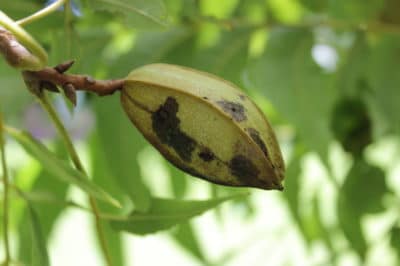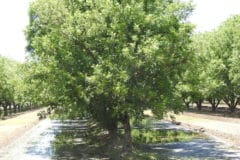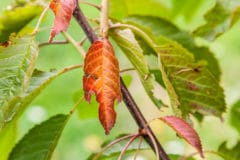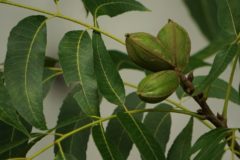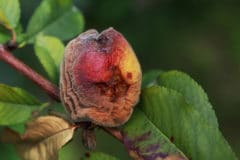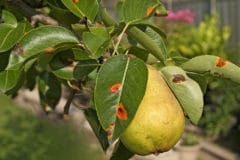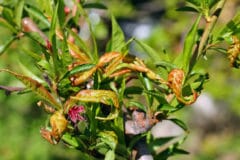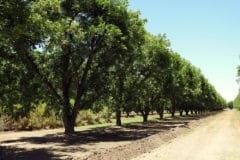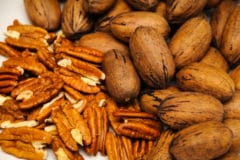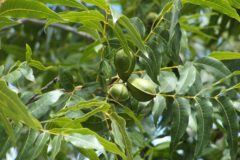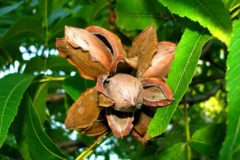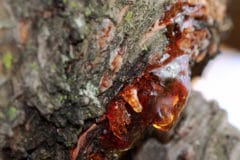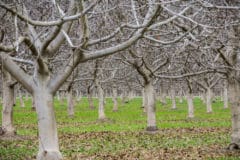About Pecan Fungal Diseases
Pecan-targeting fungal organisms spend their winters lying dormant on twigs, leaves, bark or nut husks. They overwinter both on the trees and the surrounding soil. With the return of warm, humid weather, the fungi begin producing infectious spores. Insects, rain and wind transport the spores to the trees’ growing tissues. Common fungal diseases include:
- Pecan scab
- Galls
- Powdery mildew
Pecan Scab
Pecan scab is widely regarded as the most damaging pecan tree disease. Attacking in wet, humid weather, the fungus covers young twigs, leaves and developing nuts with olive-brown to black spots. Infected nuts sometimes drop prematurely. More often, their diseased husks never split and their kernels never develop.
Expert gardener’s tip: Although pecan trees grow throughout USDA plant hardiness zones 6 through 9, those in the southeastern U.S. are most at risk of pecan scab infection.
Pecan Scab Prevention
Choosing scab-resistant pecan cultivars is your best defense against infection. Good choices include:
- ‘Elliot’
- ‘Kanza’
- ‘Jubilee’
- ‘Melrose’
When planting the trees, space them so air will circulate freely around their growing canopies. Remove low-hanging branches from older trees and keep the area around them free of debris.
Organic scab prevention includes spraying with a Bordeaux mixture of copper sulfate and hydrated lime every 10 days to two weeks between bud break and nut set, and every 10 days to three weeks from nut set to shell hardening.
Galls
Galls — dark, circular branch lesions that may appear in clumps — result from fungi invading a pecan tree through wounds in the bark. To save an affected branch, you must cut it back to healthy wood several inches below where the galls have surfaced.
To protect your pecan trees against galls, water and fertilize them regularly. Promptly removing leaves, nuts and twigs from beneath the tree as they fall also discourages the disease.
Powdery Mildew
Pecan tree stems, buds and leaves coated in white powder are suffering from a powdery mildew outbreak. The responsible fungus is most active in warm, humid conditions with temperatures between 60° and 80°F (15.5 to 26.6°C).
For organic control, spray the affected trees with copper fungicide at two week intervals until the conditions subside. If the disease strikes post-harvest, treatment isn’t needed.
